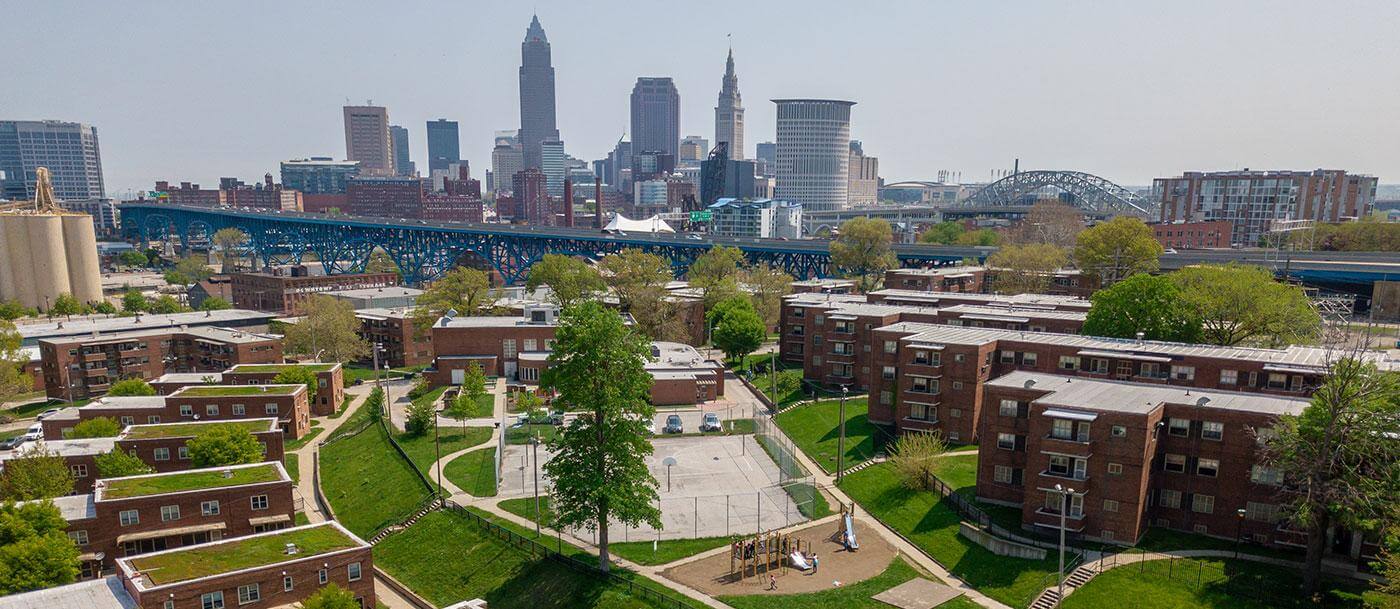Climate change is upon us, impacting our health and well-being. Earlier this year, the Intergovernmental Panel on Climate Change (IPCC) issued an assessment warning that the ravages of climate change were outpacing the ability of both nature and nations to adapt. The assessment represented a grim catalogue of the recent toll climate change has taken and cautioned that cities need to ramp up efforts to guard against these hazards.
Many American cities have committed to slashing carbon emissions. Increasingly, they are also trying to make themselves more resilient, adapting streetscapes and green spaces to counter the worst effects of extreme heat and violent storms.
Parks are a critical weapon in that fight. Green space has the power to lower air temperature and absorb floodwater and can be designed in a way that enhances those benefits. That’s especially important for disadvantaged communities, whose vulnerable populations are most at risk as the Earth warms.
“Communities are struggling with real threats from the climate crisis, like flooding and extreme heat,” says Diane Regas, president and CEO of Trust for Public Land. “And areas with the least amount of park space, namely communities of color and low-income neighborhoods, suffer the most. The good news is we have the tools to counter some of the worst impacts of climate change by using our public parks and schoolyards.”
As part of our 2022 ParkScore® index, Trust for Public Land (TPL) surveyed parks departments in the 100 most populous cities to see what they’re doing to respond to climate change. We found:
- Eighty-five percent of cities are adapting parks and recreation facilities to address climate change.
- Seventy-seven percent are enlisting parks to counter urban heat.
- Sixty-seven percent are improving surfaces to reduce flooding and runoff from rains.
- Twenty percent are managing parks and woodlands to sequester carbon dioxide, the main greenhouse gas behind climate change.
Other cities are managing parks to reduce the risk of wildfire, restoring shorelines to buffer storm surges and reduce erosion, and switching to renewable energy sources.
“It’s a pretty incredible range of practices that cities are pursuing to adapt their parks,” says Will Klein, TPL’s project manager for parks research.
Green space is not equitably distributed, however. We analyzed access to park space in those same cities, breaking down the results by race, ethnicity, and income. Our analysis found that the neighborhoods where most residents identify as people of color have access to an average of 43 percent less park acreage than mostly white neighborhoods.
Bottom line: many cities are doing a great deal, prodded by neighborhood associations, climate-justice groups, even arts organizations. But where progress is being made, these climate adaptations cannot happen fast enough. Congress, state governments, and city councils all must redouble efforts to finance green infrastructure in order to protect communities—especially those that need parks most.
Some good news: cities are generating new revenue through ballot measures for the purpose of creating and enhancing parks. A record 35 of the 100 ParkScore® cities now have voter-approved park bonds or other dedicated park-funding sources in place. Such investments can help bridge the park equity gap, reduce urban heat, and prevent flooding caused by climate change.
Read the Full 2022 ParkScore® Report
Lisa W. Foderaro is a senior writer and researcher for Trust for Public Land. Previously, she was a reporter for the New York Times, where she covered parks and the environment.
One-third of Americans, including 28 million children, lack safe, easy access to a park within a 10-minute walk of home. Urge your senators to pass the Outdoors for All Act to create parks and enhance outdoor recreational opportunities!

